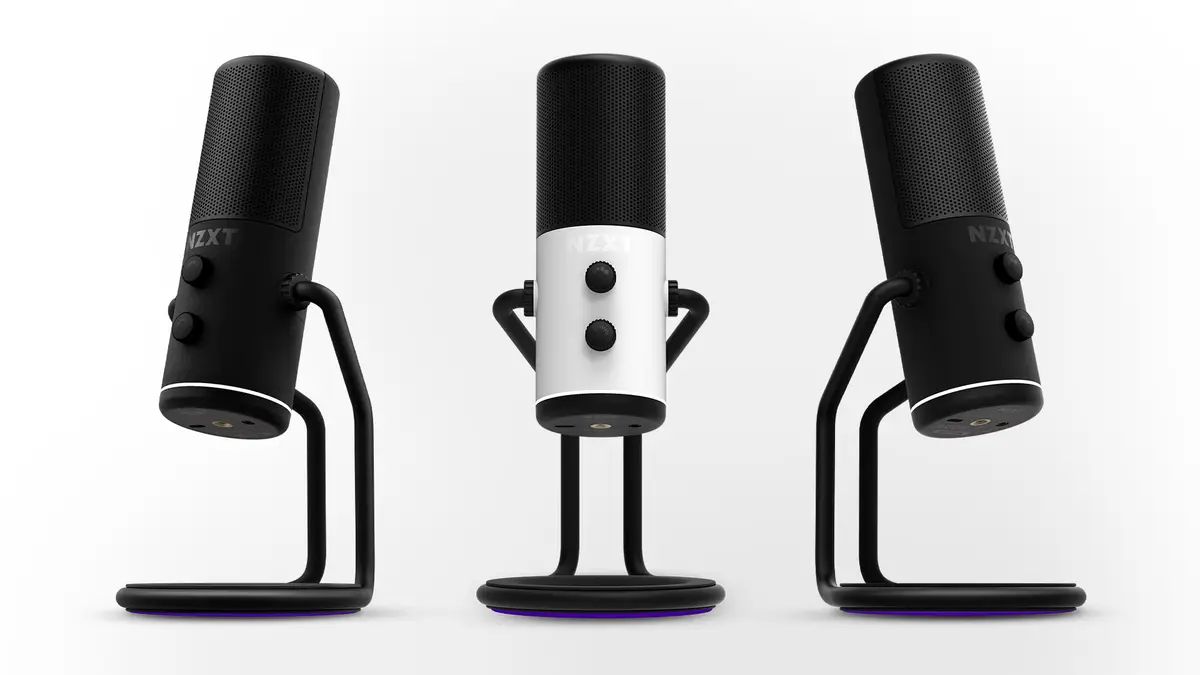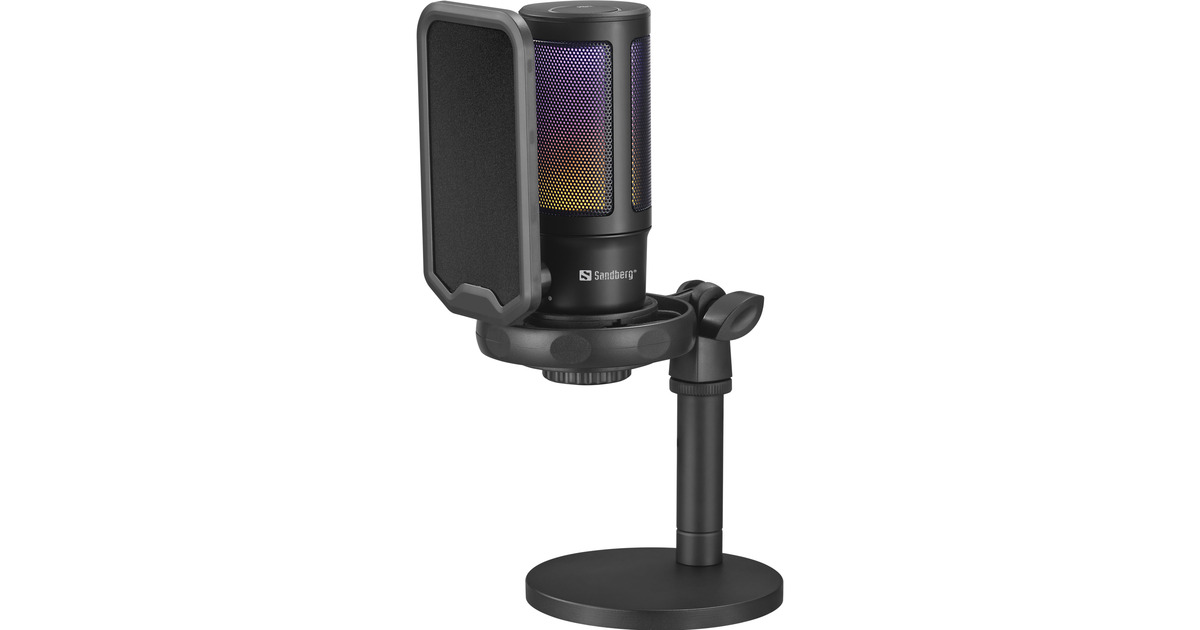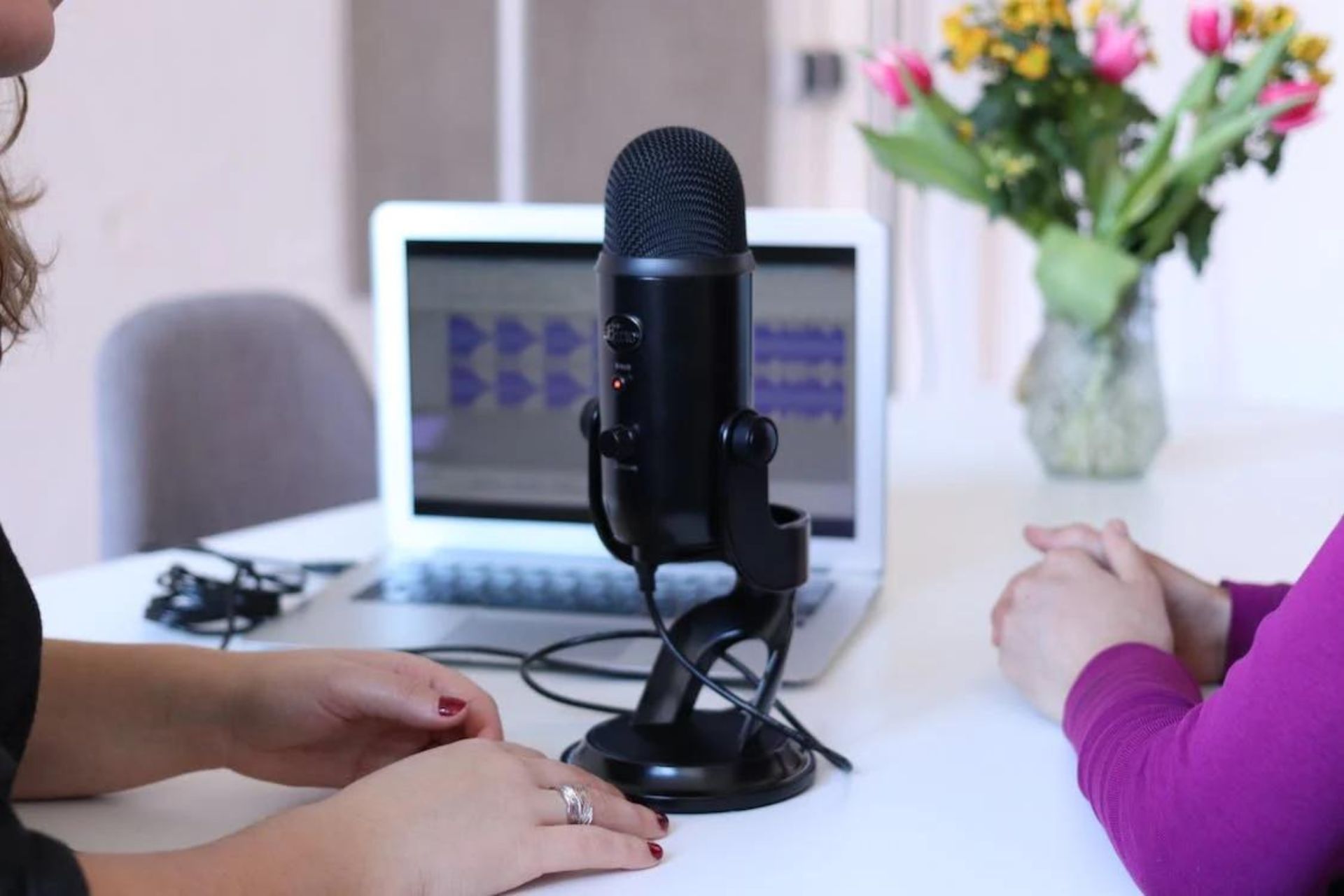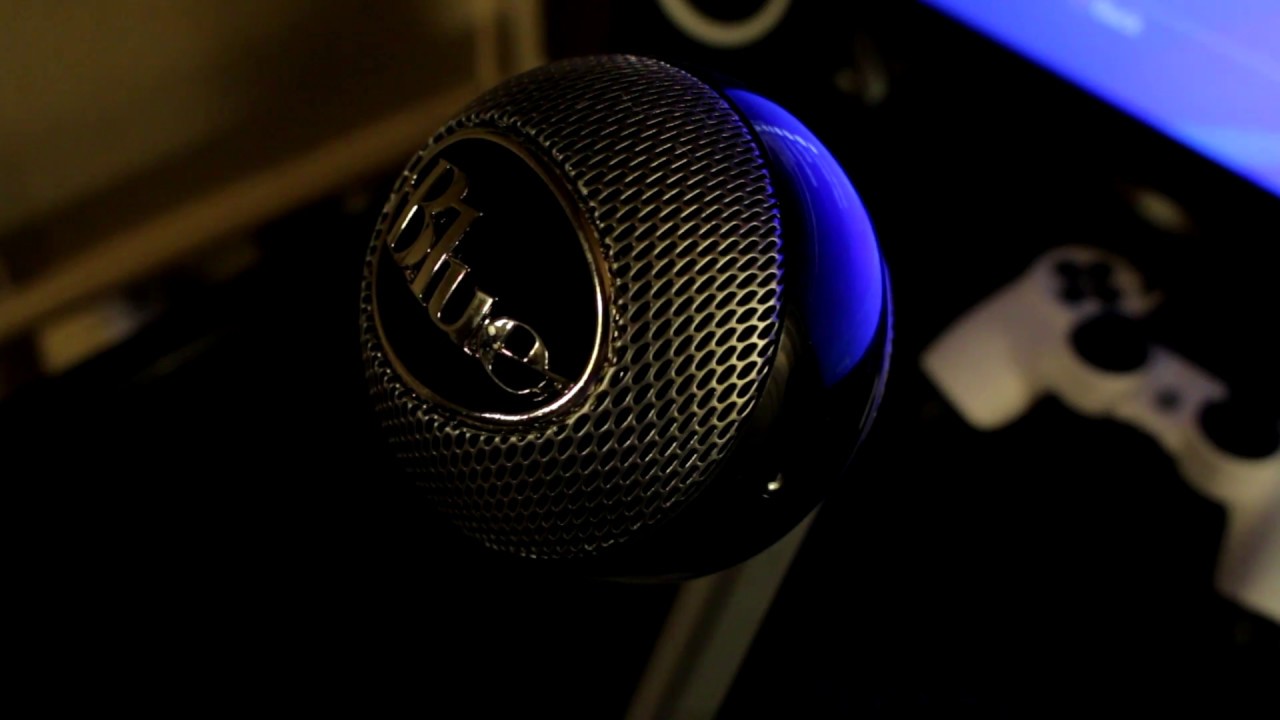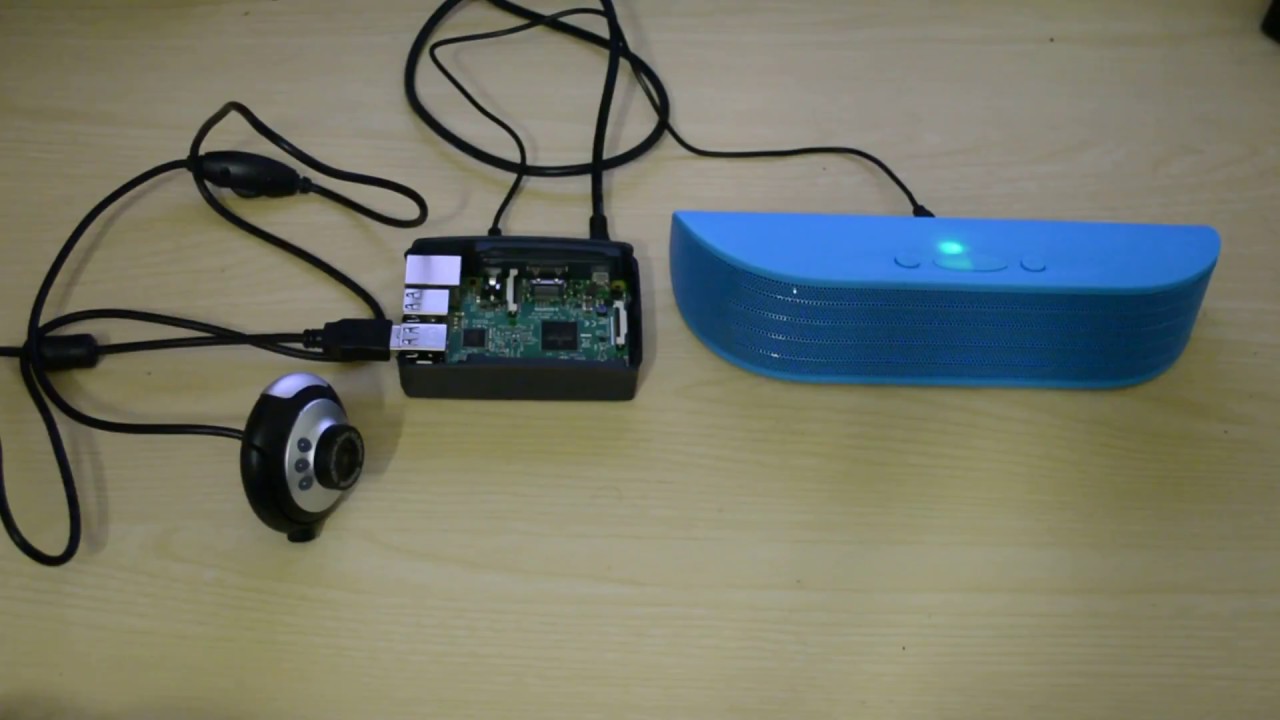Introduction
So, you've got yourself a shiny new USB microphone, but for some reason, it's not working as expected. Fret not, as this guide will walk you through the steps to troubleshoot and resolve the issue. Whether you're a podcaster, gamer, musician, or just looking to improve your audio quality for calls, getting your USB microphone to work is essential for achieving clear and crisp sound.
A USB microphone is a convenient and versatile tool, offering plug-and-play functionality without the need for additional audio interfaces or mixers. However, like any technology, it can encounter hiccups along the way. The good news is that most issues with USB microphones can be resolved with a few simple troubleshooting steps.
In this guide, we'll cover the common problems that may arise when setting up a USB microphone and provide practical solutions to get it up and running smoothly. From checking the connections to troubleshooting hardware issues, we've got you covered. By the end of this guide, you'll be equipped with the knowledge and confidence to troubleshoot your USB microphone and enjoy high-quality audio without any hassle. Let's dive in and get that USB microphone working seamlessly for all your recording and communication needs.
Check the Connections
Before delving into complex troubleshooting, it’s essential to start with the basics. The first step in resolving USB microphone issues is to ensure that all connections are secure and properly configured.
Here’s a step-by-step guide to checking the connections for your USB microphone:
- USB Port: Ensure that the USB cable from the microphone is securely plugged into a functional USB port on your computer. If possible, try using a different USB port to rule out any issues with the original port.
- Cable Integrity: Inspect the USB cable for any signs of damage, such as fraying or exposed wires. If the cable appears damaged, consider using a replacement cable to determine if the issue lies with the cable itself.
- Microphone Power: Some USB microphones require power to function. If your microphone has a power switch or requires batteries, ensure that it is powered on and functioning correctly.
- Device Manager: Check the Device Manager on your computer to confirm that the USB microphone is recognized and listed without any error indicators. If the microphone is not listed or shows an error, it may indicate a driver issue.
Once you’ve verified the connections and power source for your USB microphone, attempt to use it with different applications or recording software to determine if the issue is specific to a particular program. If the microphone functions with one application but not others, it may indicate software compatibility issues rather than a hardware problem.
By ensuring that the connections are secure and properly configured, you can eliminate common issues related to faulty connections or power supply. If the problem persists after checking the connections, it’s time to explore other potential solutions to get your USB microphone working seamlessly.
Update Drivers
Outdated or malfunctioning drivers can often be the culprit behind USB microphone issues. Drivers act as the communication bridge between the hardware (the microphone) and the operating system, ensuring that they work together harmoniously. If the drivers are outdated or corrupted, the microphone may not function as intended. Here’s how to update the drivers for your USB microphone:
- Device Manager: Open the Device Manager on your computer by right-clicking the Start button and selecting “Device Manager.” Look for the “Audio inputs and outputs” section to find your USB microphone. If there is a yellow exclamation mark next to the microphone, it indicates a driver issue.
- Update Driver: Right-click on the USB microphone in the Device Manager and select “Update driver.” Choose the option to search automatically for updated driver software. Windows will then search for the latest driver and install it if available. Follow the on-screen instructions to complete the update process.
- Manufacturer’s Website: If Windows is unable to find an updated driver, you can visit the manufacturer’s website of your USB microphone to manually download and install the latest driver. Look for the support or downloads section on the manufacturer’s website and search for the specific driver for your microphone model.
- Driver Update Software: Alternatively, you can use reputable driver update software that can automatically scan your system for outdated drivers and download the latest versions. Be cautious when using third-party software and ensure that it is from a trusted source to avoid potential security risks.
After updating the drivers, restart your computer and test the USB microphone to see if the issue has been resolved. If the microphone is now functioning correctly, the outdated drivers were likely the cause of the problem. However, if the issue persists, there may be additional steps required to address the root cause of the malfunction.
Ensuring that your USB microphone has the latest drivers installed is crucial for optimal performance and compatibility with your operating system. By keeping the drivers up to date, you can mitigate potential issues and enjoy a seamless audio experience with your microphone.
Set the Microphone as Default Device
Configuring your USB microphone as the default recording device is essential to ensure that it is recognized and utilized by your computer and applications. By setting it as the default device, you can avoid conflicts with other audio inputs and streamline the recording process. Here’s how to set your USB microphone as the default device:
- Access Sound Settings: Right-click on the speaker icon in the system tray or navigate to the Sound settings in the Control Panel or Settings menu, depending on your operating system.
- Recording Tab: In the Sound settings, locate the “Recording” tab, which displays a list of available audio input devices, including microphones. If your USB microphone is connected and functioning, it should appear in the list.
- Set as Default: Right-click on your USB microphone and select “Set as Default Device” from the context menu. This action designates the USB microphone as the primary recording device for your system.
- Adjust Levels: After setting the USB microphone as the default device, you can further refine its settings by adjusting the recording levels and properties. Click on the microphone in the list, then click “Properties” to access additional settings such as volume levels, enhancements, and advanced configurations.
Once you’ve set the USB microphone as the default recording device and adjusted its settings, test it with your preferred recording or communication application to ensure that it is functioning correctly. If the microphone is now recognized and captures audio as expected, you’ve successfully configured it as the default device. However, if the issue persists, there may be underlying factors contributing to the malfunction.
By designating the USB microphone as the default recording device, you streamline the audio input process and minimize potential conflicts with other devices. This straightforward configuration step is crucial for ensuring that your computer prioritizes the USB microphone for recording and communication purposes.
Adjust Microphone Settings in the System
Fine-tuning the microphone settings within your system can significantly impact the performance and functionality of your USB microphone. By adjusting these settings, you can optimize the audio input, enhance clarity, and address potential issues that may arise during recording or communication. Here’s how to adjust the microphone settings in the system:
- Access Sound Settings: Navigate to the system’s Sound settings, typically accessible through the Control Panel, Settings menu, or the system tray’s speaker icon.
- Microphone Properties: In the Sound settings, locate the “Recording” tab and click on your USB microphone to access its properties. This allows you to adjust various settings specific to the microphone.
- Levels and Enhancements: Within the microphone properties, you can adjust the recording levels, microphone boost, and apply audio enhancements to optimize the sound quality. Experiment with different levels to find the optimal settings for your recording needs.
- Advanced Settings: Explore the advanced settings for the microphone, which may include options for exclusive mode, signal enhancements, and format configurations. Depending on the microphone and system, these settings can offer additional customization for improved performance.
After adjusting the microphone settings, test the USB microphone with your preferred applications to ensure that the changes have positively impacted its functionality. Pay attention to the audio quality, clarity, and the microphone’s ability to capture sound accurately. If the microphone now operates as expected, the adjustments have likely resolved any previous issues. However, if the problem persists, further troubleshooting may be necessary to identify the root cause.
By fine-tuning the microphone settings within the system, you can tailor the audio input to suit your specific recording and communication requirements. These adjustments empower you to optimize the USB microphone’s performance and ensure that it operates seamlessly with your system and applications.
Troubleshoot Hardware Issues
When encountering persistent issues with your USB microphone, it’s essential to consider potential hardware-related factors that may be contributing to the malfunction. By troubleshooting hardware issues, you can pinpoint and address underlying problems that affect the microphone’s performance. Here’s how to troubleshoot hardware issues related to your USB microphone:
- Physical Inspection: Begin by conducting a visual inspection of the USB microphone, its cable, and any associated accessories. Look for signs of physical damage, loose connections, or irregularities that may impact its functionality.
- Alternate USB Ports: Test the USB microphone with different USB ports on your computer to rule out potential issues with a specific port. If the microphone functions correctly in one port but not others, it may indicate a port-related problem.
- Test on Another System: Connect the USB microphone to a different computer or device to determine if the issue is specific to your system. If the microphone works without issues on another system, it suggests that the problem may be related to your computer’s configuration or settings.
- Replace Cables and Adapters: If possible, try using alternative USB cables or adapters to verify that the issue is not caused by a faulty cable or connection. Swapping out these components can help isolate the source of the problem.
- Driver Reinstallation: Uninstall the USB microphone’s drivers from the Device Manager and reinstall them to ensure that the drivers are properly configured and functioning. This process can resolve driver-related issues that impact the microphone’s performance.
After troubleshooting the hardware-related aspects of the USB microphone, test its functionality to determine if the steps have resolved the issues. If the microphone now operates without disruptions, the hardware troubleshooting measures have likely addressed the root cause. However, if the problem persists, further investigation or professional assistance may be required to diagnose and resolve the issue.
By systematically troubleshooting hardware issues, you can identify and mitigate factors that impede the proper functioning of your USB microphone. These steps empower you to address physical, connectivity, and compatibility issues, ensuring that the microphone operates optimally for your recording and communication needs.
Conclusion
Congratulations! You’ve navigated through the troubleshooting process to address issues with your USB microphone and have gained valuable insights into resolving common problems. By following the steps outlined in this guide, you’ve taken proactive measures to ensure that your USB microphone functions seamlessly for all your recording, gaming, streaming, or communication endeavors.
From checking the connections and updating drivers to configuring the microphone settings and troubleshooting hardware issues, you’ve demonstrated resilience and resourcefulness in tackling technical challenges. These troubleshooting steps not only resolve immediate issues but also equip you with the knowledge to address potential future complications effectively.
Remember, technology can be unpredictable, and occasional hiccups are not uncommon. However, armed with the troubleshooting techniques outlined in this guide, you’re well-prepared to overcome obstacles and maintain the optimal performance of your USB microphone. Whether you’re a content creator, professional communicator, or enthusiast, a functional USB microphone is an invaluable tool for delivering clear and impactful audio.
As you continue to explore the realms of audio recording and communication, keep in mind the troubleshooting strategies you’ve learned. Stay curious, stay adaptable, and don’t hesitate to seek further assistance or explore advanced solutions if needed. Your pursuit of audio excellence is supported by your newfound expertise in troubleshooting USB microphone issues.
With your USB microphone now operating smoothly, you can confidently immerse yourself in your creative pursuits, confident that your audio quality is in good hands. Embrace the power of clear, crisp sound, and let your voice be heard with clarity and conviction. Here’s to seamless audio experiences and uninterrupted creativity!







